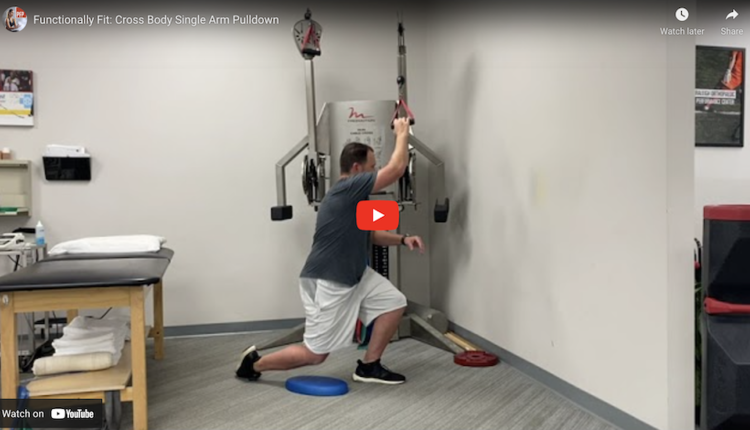Poor rotator cuff strength and limited endurance can contribute to shoulder pain and impingement in overhead athletes and clientele. In addition, limited shoulder mobility may also create internal impingement leading to rotator cuff and/or labral injuries. This exercise will help work on end range horizontal external rotation and improve posterior shoulder strength.


Execution:
Begin by placing the left forearm against a squat rack or wall with the shoulder abducted and eternally rotates to 90 degrees with the elbow bent 90 degrees. This will place the shoulder in the cocking phase for throwers. Next, position the opposite front leg out in front of the body (split stance) and move forward to a point where the shoulder is at or near end range of motion.
Now, slowly pull the hand away from the rack or wall. Hold for 3 seconds, and then return to the starting position. Repeat for 10 repetitions, focusing on quality movement. Avoid straining or any motion that causes pain or pinching in the shoulder joint. Perform 1-3 sets.
(Note: the exercise can be done bilaterally for those desiring to maximize cuff activation and shoulder mobility. For throwing/serving athletes, it is most prudent to do it on the dominant shoulder for injury prevention and arm care)
Progression:
Increase the hold time to 5 seconds for more time under tension
Application:
The exercise is designed to facilitate improved end range of motion for horizontal external rotation, as well as increase posterior rotator cuff strength (teres minor and infraspjnatus). The posterior cuff helps decelerate the arm during throwing/serving while working with the other cuff musculature and long head of the biceps tendons to adequate depress the humeral head to avoid impingement with overhead activity. This specific exercise can be used as a warm-up, corrective or routine shoulder strengthening drill.




















